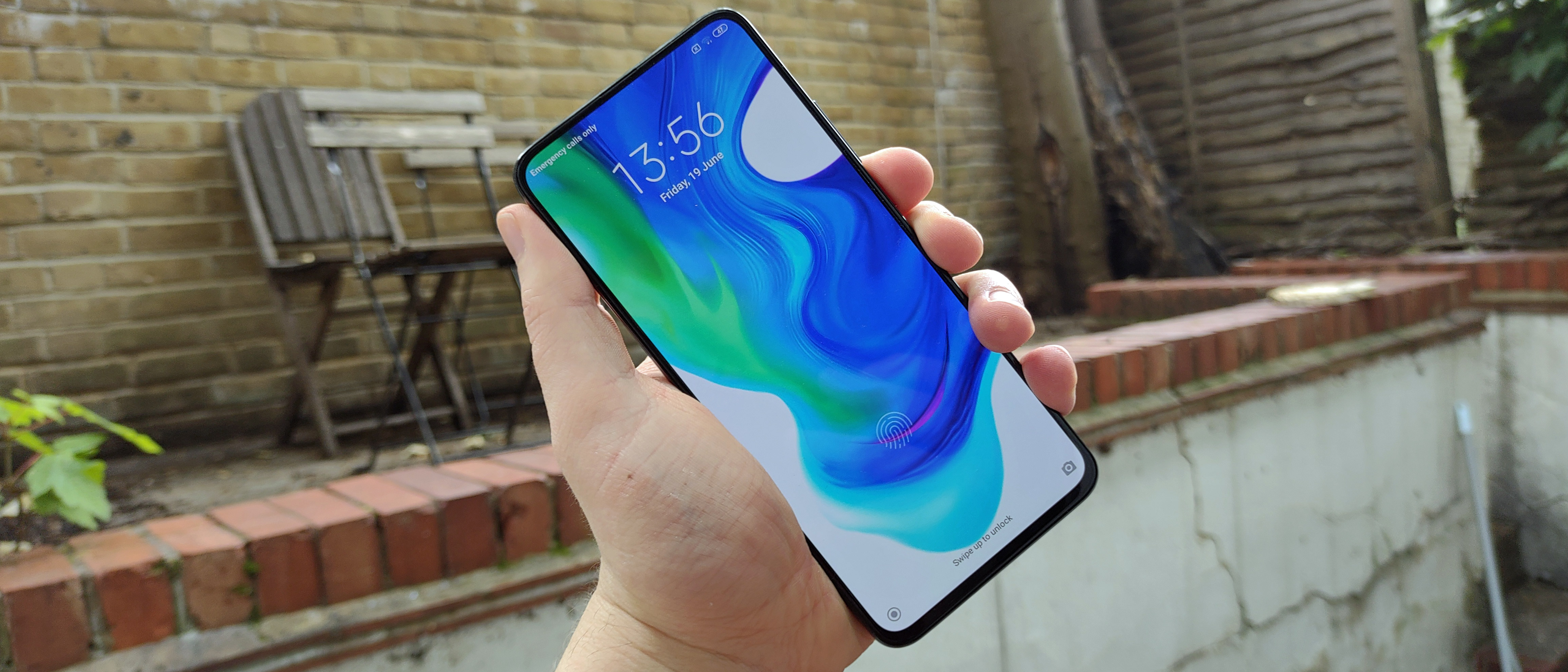TechRadar Verdict
The Poco F2 Pro from Xiaomi is a good mid-ranged phone with a variety of strengths yet a low price tag. Its screen looks bold, its cameras take pretty good-looking photos and its processing power is some of the best we've seen in a smartphone. It isn't for everyone, especially if you've got the money to spend on a top-end phone, but it's definitely one worth considering if it's in your price range.
Pros
- +
Fairly affordable for the specs
- +
Big unbroken screen
- +
Pop-up camera is fun
Cons
- -
A little on the large side
- -
Can get hot
- -
Headphone jack was hard to use
Why you can trust TechRadar
Two-minute review
The Poco F2 Pro from Xiaomi is a handset with high-end specs going for a mid-range price, and the same could be said about plenty of phones the company puts out. That’s all well and good but the Pocophone F1, its predecessor, was a much cheaper phone, aimed at a completely different market segment.
So it feels as if the Poco F2 Pro (which doesn’t have a non-Pro sibling), is going for something different to its predecessor, which is curious given how popular that phone was.
The Poco F2 Pro is the first of the Pocophone range to get announced outside Asia since that original, and Xiaomi has become a big name in the west in the intervening time. We’d guess Xiaomi is using the new phone to fill a gap in its phone line-up - the Mi range used to be mid-rangers until the Xiaomi Mi 10 hit the premium phone tier, so now the Pocophone handsets can fill that role.
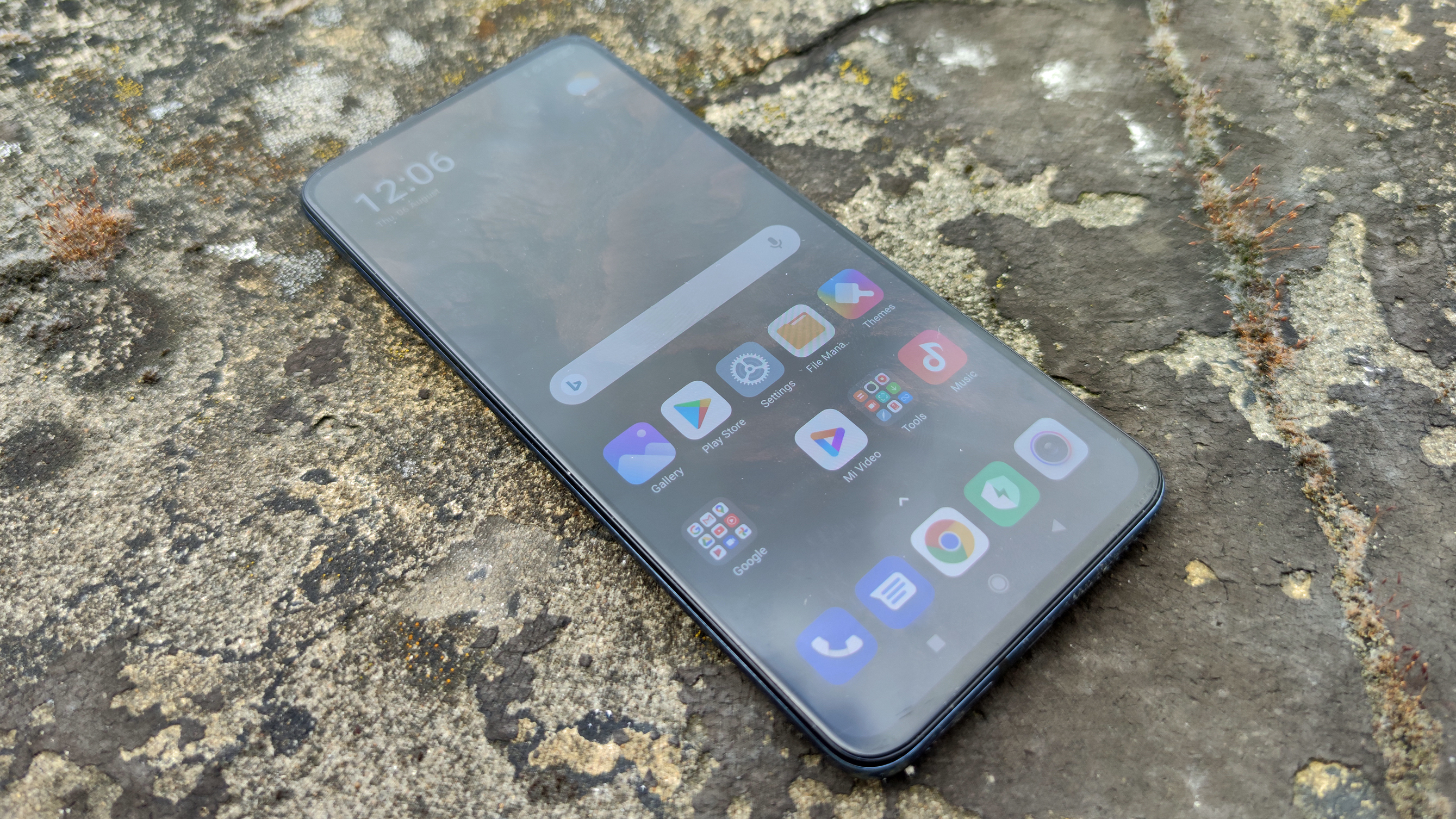
Price and release date
Design
Display
Cameras
Performance
Software
Battery
Should I buy it?
If you’re looking for a good phone at a mid-range price tag, you could do a lot worse than the Poco F2 Pro, as it’s a solid device with one or two drawbacks that won’t necessarily ruin your experience.
One neat feature here is that the Xiaomi Poco F2 Pro has a pop-up camera - they were in vogue in 2019, but we’ve barely seen any in 2020. There’s no notch and minimal bezel on the front of the phone - you don’t need big bezels to house the camera if the camera is hidden inside the phone - so the F2 Pro gives you an all-screen experience.
The phone also has fairly high-end specs across the board - it has a Snapdragon 865 chipset, which is the best you could find in Android phones at the time of its release, a 64MP main camera, fast 30W charging, a 4,700mAh battery, and a large FHD+ screen.
So there’s a lot to like whether you’re a camera fan or someone who needs speedy performance, as the Poco F2 Pro is one of the best we’ve tested for processing power.
Still, the handset isn’t perfect, especially in the design area. The phone is quite big and bulky, gets hot quickly, and has a headphone jack that seems to prefer being filled with fluff than audio cables.
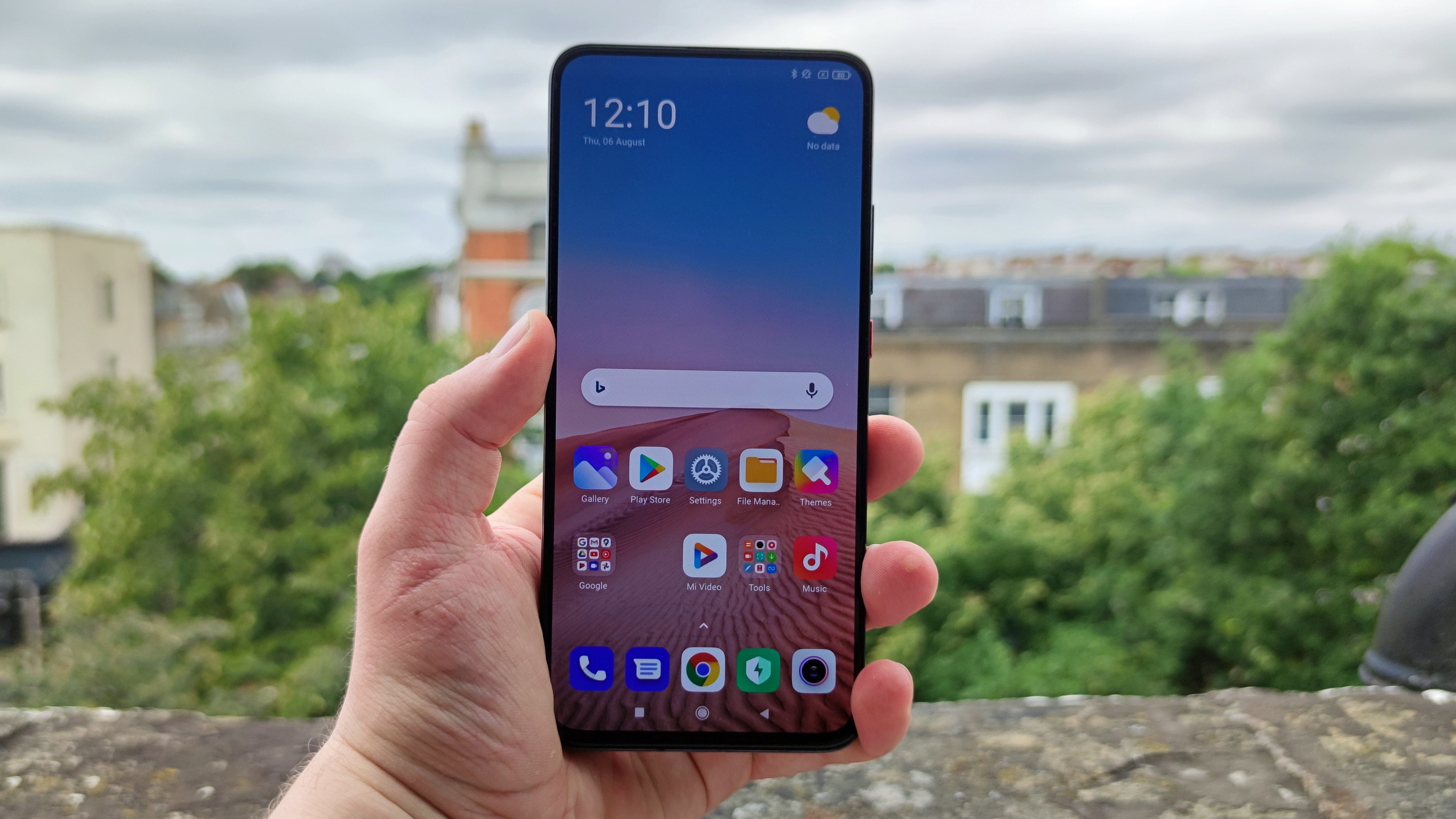
Phones with mid-range prices and high-end features are never perfect, as corners need to be cut to keep the price low, so it’s understandable that the Poco F2 Pro has its fair share of problems. Some users won’t even mind these issues, and if your response to those we point out is “so what?” then we can recommend this phone.
We’re just disappointed the Pocophone F1 hasn’t seen a real successor in this phone - that was a popular cheap phone, and a Poco F2 Pro with more in common with that could have taken on the OnePlus Nord and iPhone SE (2020). Maybe we’ll see a non-Pro model do just that further down the line.
Xiaomi Poco F2 Pro price and availability
The Poco F2 Pro was announced in May 2020 and its release was staggered by region after that - in the UK its release date was June 19.
The phone costs £549 in the UK, which converts to roughly $680 or AU$990. We wouldn’t expect the phone to come to the US, as Xiaomi generally doesn’t sell phones there save its Black Shark line, but it does sell them in Australia, so while the handset hasn’t been announced there at the time of writing, it could appear there before too long.
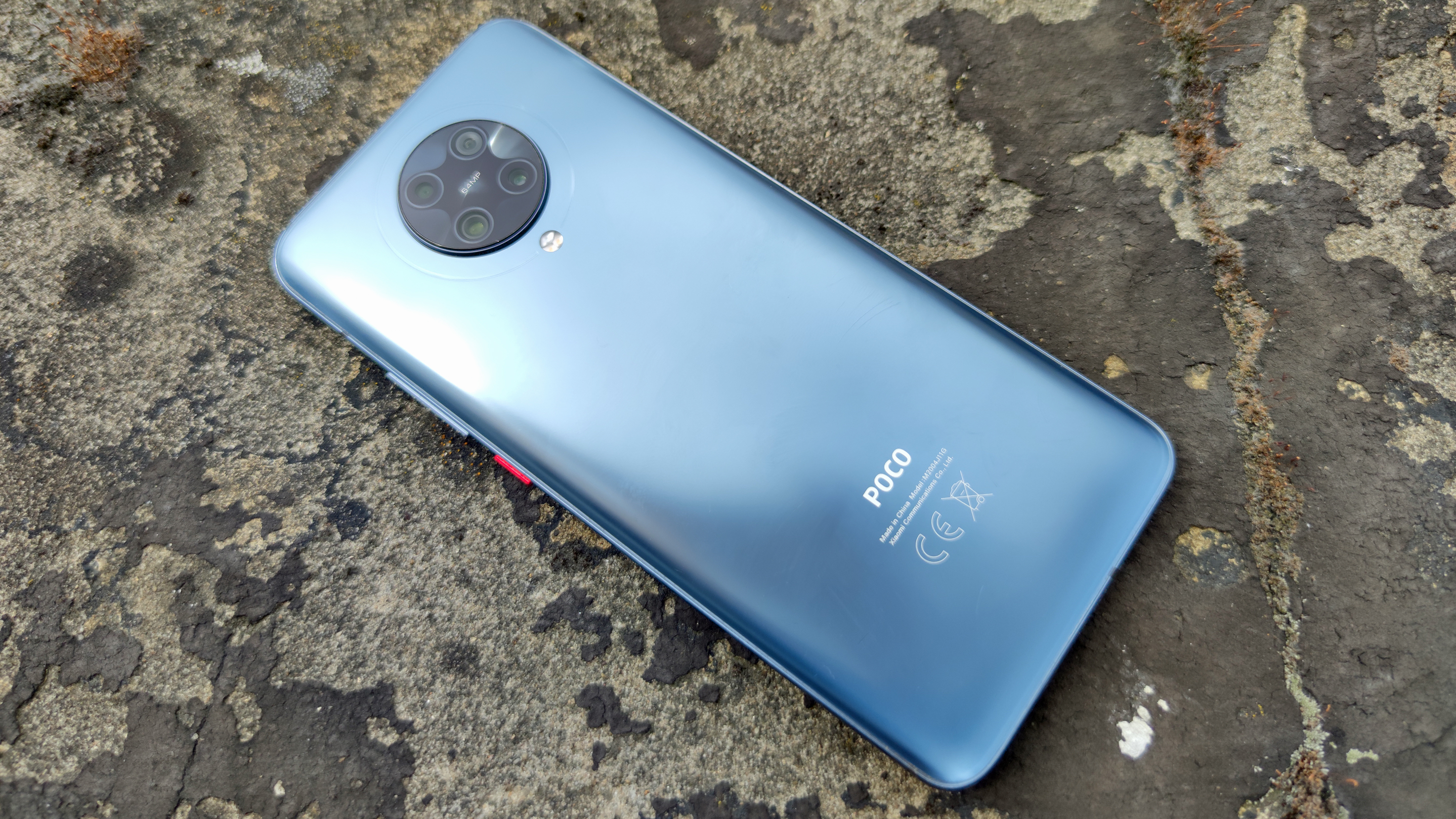
At that price, it’s competing with Xiaomi’s own Mi Note 10 which costs £459 (roughly $580, AU$820) as well as the Motorola Edge at £549 / $699 (about AU$1,015), the OnePlus 8 at $699 / £599 (about AU$1,100), and a few other phones at that rough price.
That’s a pretty competitive price point, and as such the Poco F2 Pro will likely appeal to people looking for top specs who don’t mind one or two cut corners.
Design
The Poco F2 Pro is a little on the large side, but not necessarily prohibitively so. With dimensions of 163.3 x 75.4 x 8.9 mm there are a few bigger and thicker phones than it, and while it’s a little heavy at 219g, again there are heftier phones out there.
We sometimes had trouble reaching the side buttons and the extremes of the screen, and we’ve got fairly average-sized hands, so people with smaller hands will only be able to use this phone two-handed.
The phone has a glass front and back and an aluminum frame. On the right edge there’s a volume rocker and a bright red power button, there’s a USB-C port on the bottom edge, and a 3.5mm headphone jack on the top edge of the phone.
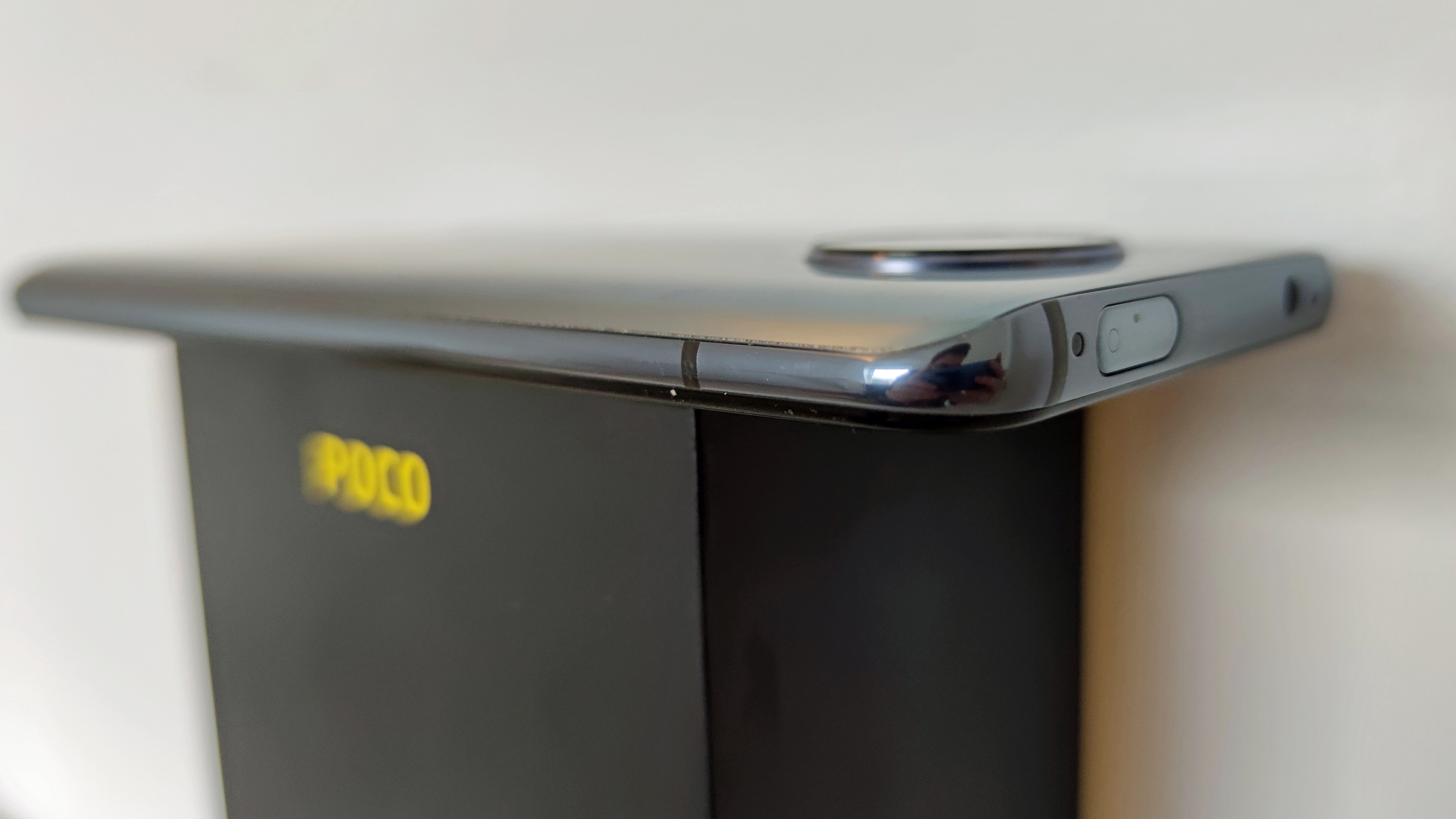
We’d normally point out how a headphone jack is useful for people who like wired audio, but we actually had issues with this one - the 3.5mm cable wouldn’t stay in the jack, and easily fell out. It felt as though we should have been able to push it in further for it to stay, but this wasn’t possible, so cables frequently fell out which disrupted music listening. This was possibly just an issue with our review unit but we can’t say for sure.
If like us, you put your phone in your pocket with the top edge pointing down, you’re also going to find this 3.5mm jack picks up all the fluff in your pocket, as we frequently notice with phones that have their jacks on the top edge. You’ll quickly become an expert at removing lint from the jack if you use this device.
The Poco F2 Pro has a pop-up camera - it’s a small rectangular one, as is the case in all Xiaomi phones with the feature, but it’s got something we don’t see much on these in the form of LED lights on either side. When you pop the camera up, it shines and plays a loud melody. Depending on your tolerance for this sort of thing, you might love the garish pop-up or hate it - putting your device on silent mode stops the noise happening.
The pop-up feels sturdy - there’s auto drop detection here so it retreats into the phone when the phone is falling, and it doesn’t wobble or shake at all when you move the phone while this pop-up is out - we can’t say that about all handsets with such a camera.
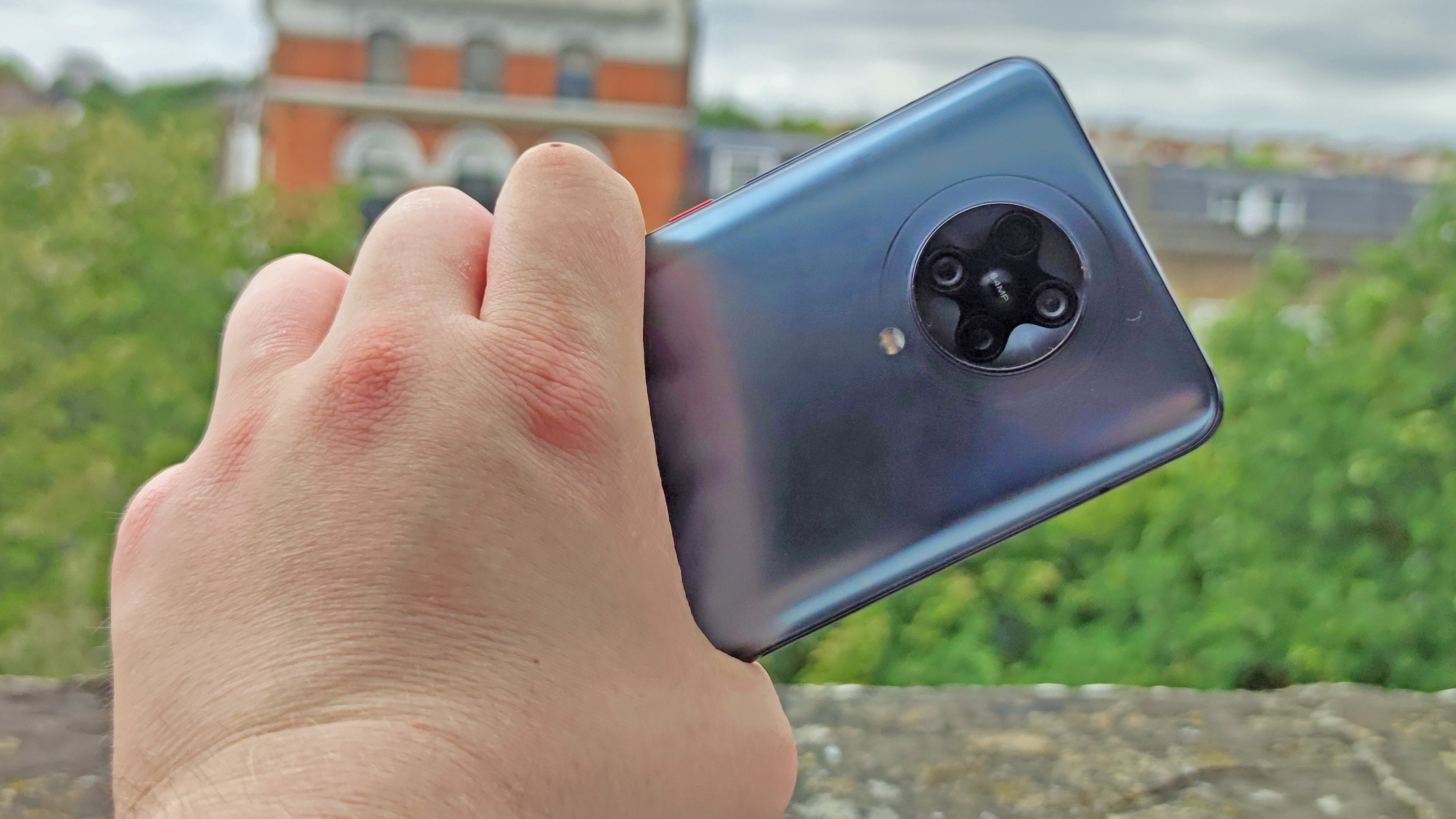
The back of the phone has the Poco logo as well as a circular camera bump - it sticks out quite a bit from the rear, which is something we frequently notice for Xiaomi phones, but it looks a lot more distinct than the standard vertical bar design that so many 2020 smartphones use.
The Poco F2 Pro bears more than a passing resemblance to a Huawei Mate phone, especially thanks to this camera bump and that doesn’t feel accidental - those phones are performance powerhouses and Xiaomi likely wants to evoke that feeling with the Poco F2 Pro too.
Display
The Poco F2 Pro’s display feels pretty standard for a phone at this price point - it’s not mind-blowing, but it’s certainly fit for purpose and won’t leave you disappointed.
The screen size is 6.67 inches across and it has a 20:9 aspect ratio, so it’s fairly long. Xiaomi seems to be using 6.67-inch screens in lots of phones in 2020, including the Mi 10 and Redmi Note 9 Pro - perhaps the company has decided it’s the perfect size of screen.
The resolution here is 1080 x 2400 - the phone has HDR10+ tech too, so generally content looks good. Colors can look pretty vivid and bold, and - in part because it’s an AMOLED screen - darks look very dark, so you won’t be disappointed when using this to stream movies or TV.
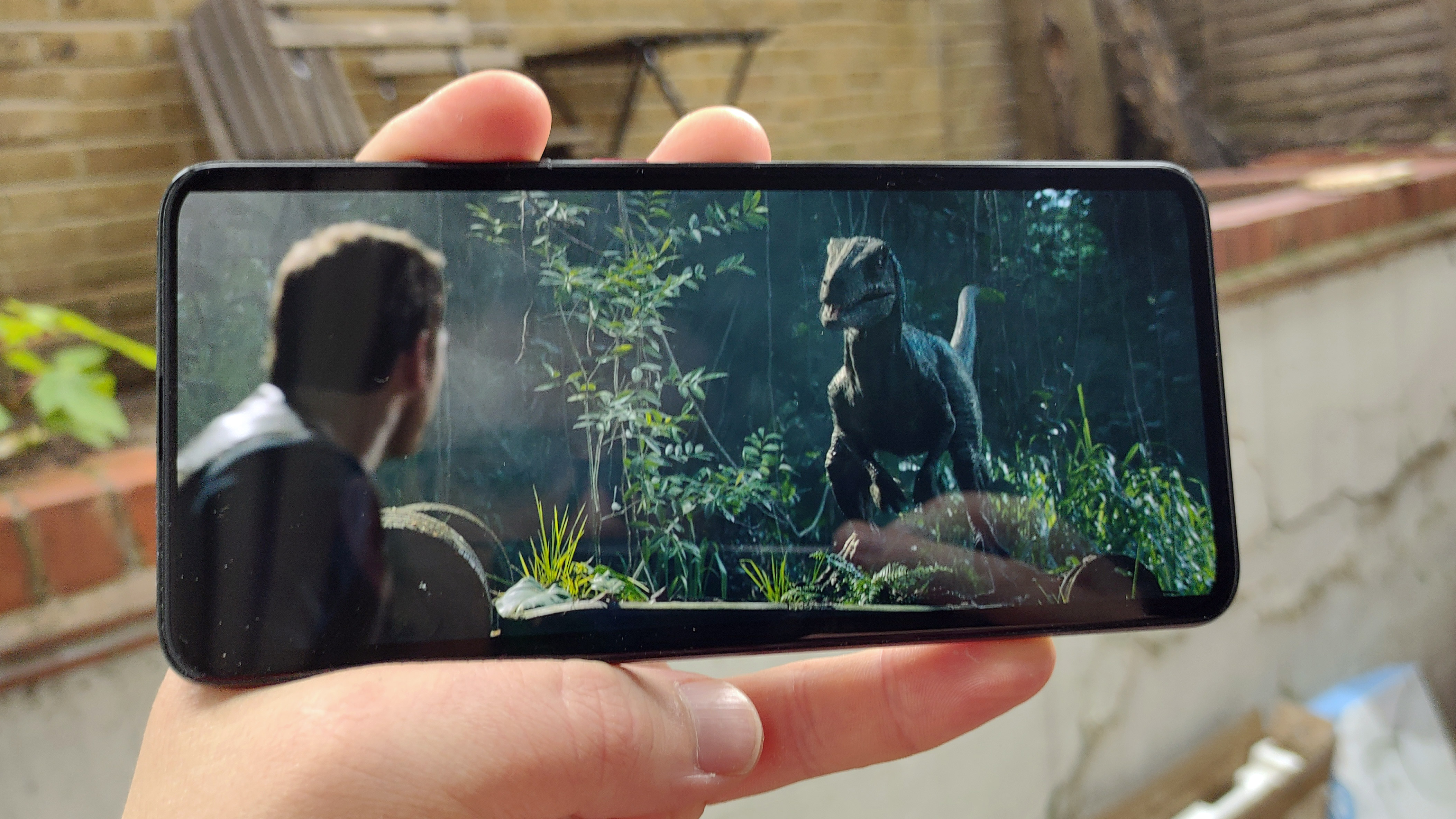
Something that may irk potential buyers could be the phone’s refresh rate. While many phones nowadays, even mid-range ones, have refresh rates which can go up to 90Hz or even 120Hz, the Poco F2 Pro is stuck at 60Hz, which used to be the standard. A lot of phones still only have 60Hz displays, but they’re generally cheap phones or iPhones.
Higher refresh rates in screens makes scrolling, swiping, and viewing movies and games look a lot smoother, so many people may prefer them. However you’ll probably only notice the lack of the tech in the Poco F2 Pro if you’re used to it in another phone.
Cameras
You’re looking at four rear cameras on the Xiaomi Poco F2 Pro, housed in that big spot on the back. They include a 64MP f/1.9 main, 5MP f/2.2 telephoto macro (for long-range and close-up shots), 13MP f/2.4 ultra-wide, and 2MP f/2.4 depth-sensing snapper.
We found the Poco F2 Pro took pretty good pictures, and this seems to be thanks to the image post-processing software. Snaps were tweaked to make them vibrant and colorful, although perhaps not as bright as those you’d take on a Samsung or Apple phone. Still, we were generally impressed with pictures taken using the main camera.
One thing we noticed in our testing is that autofocus wasn’t always very effective - we found ourselves manually locking focus to be able to take snaps of certain subjects.
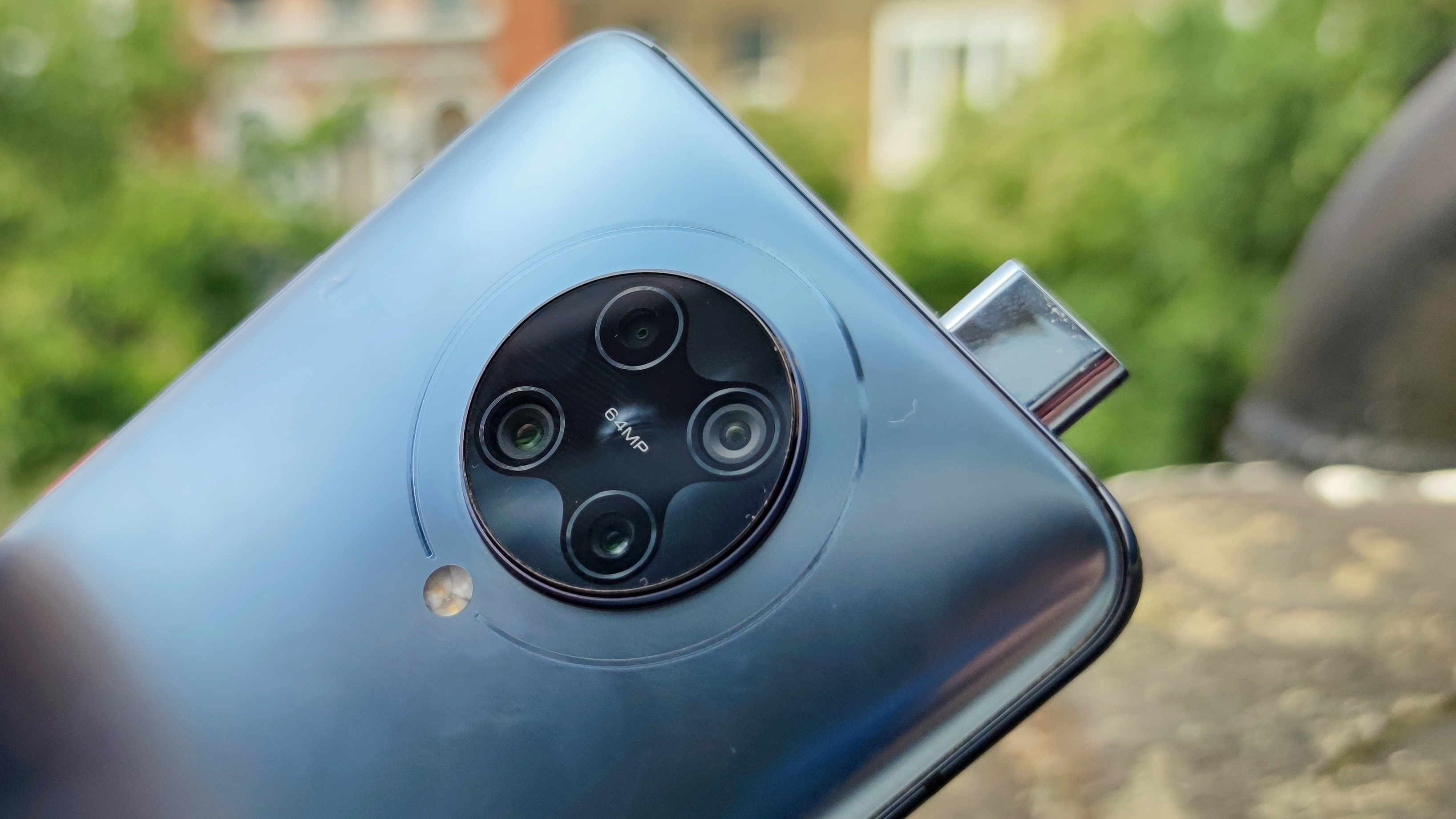
The ‘telephoto macro’ camera here is pulling double weight, as it facilitates both zoomed pics (with 2x optical and 10x digital zoom) and macro, or close-up, snaps. It’s fine in both regards, but we do wish the sensor was a little more high-res.
Pictures taken at 2x zoom looked fairly colorful, likely thanks to the aforementioned image optimization, but lots of detail was missing, particularly in darker areas of the picture. 10x snaps looked hazy, but that’s almost always the case with digital zoom, so we can’t mark the handset down much for that.
We weren’t disappointed by ultra-wide snaps, and they looked similar in result to pictures taken with the main snapper, aside from being a little brighter at times.
Finally, the depth-sensing camera is presumably for improved depth-of-field in snaps, which comes into play in portrait mode. In portrait mode, there was some artificial bokeh background blur, but it didn’t always feel accurate or nuanced. That’s not to say portrait snaps were bad, but given the Mi 10 Pro and Mi Note 10 have dedicated portrait cameras that take shots with really accurate blur and extra image optimization, we weren’t blown away here.
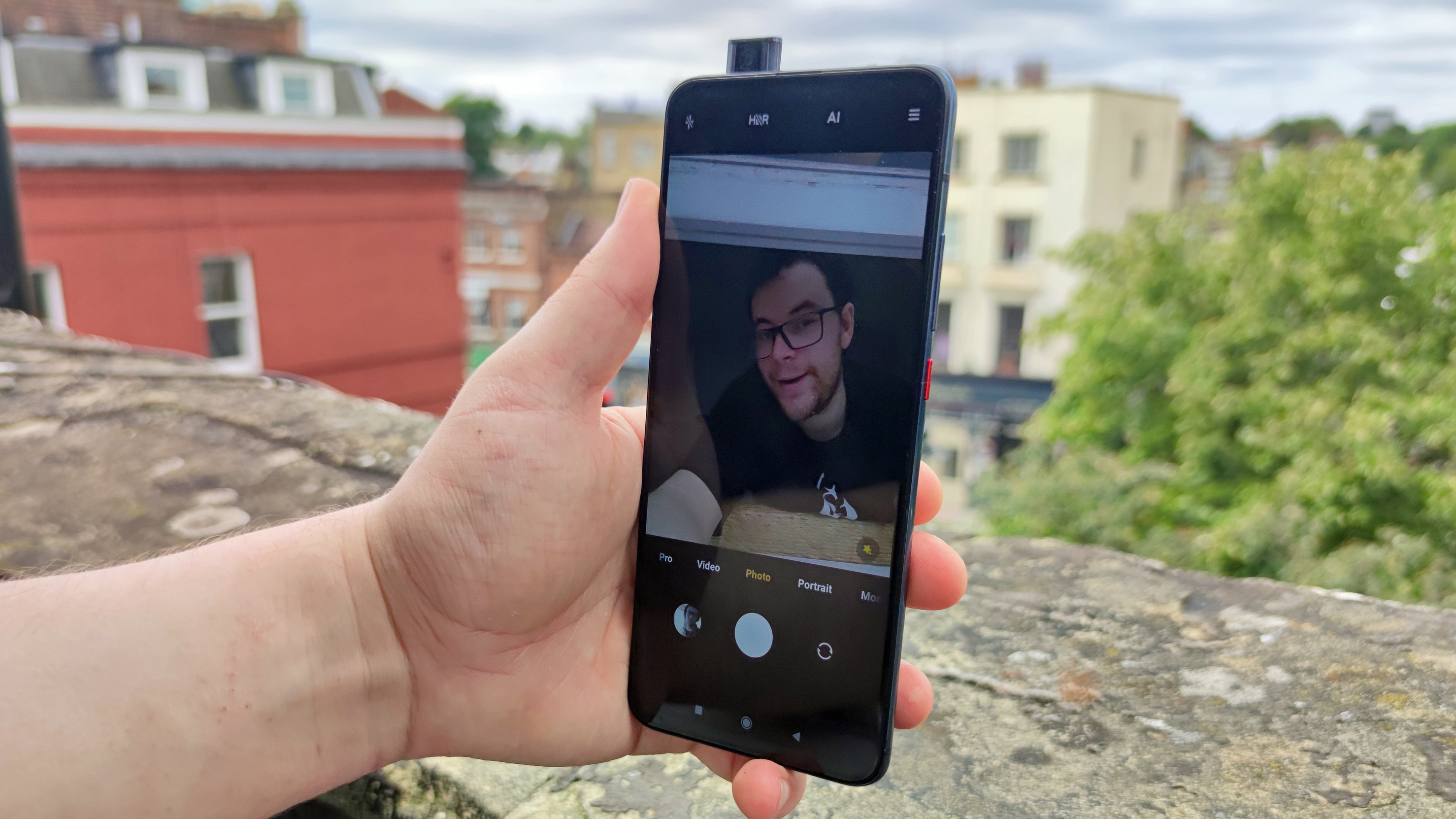
The phone records video in up to 8K quality at 30fps (capped at 6 minutes of recording time), or up to 4K at 60fps. There’s also slow-mo at 720p or 1080p at a variety of frame rates, and it’s good to see that range of options as most devices only offer one slow-mo rate.
As with some other Xiaomi phones we’ve tested, there is a range of video modes you won’t find in many other devices, like Front & Back which lets you record from both the front and back cameras at once, and Vlog which edits together different short videos you take. These modes are fun to play around with, but we don’t imagine too many users will find themselves using them regularly.
The front-facing camera has a 20MP sensor with an f/2.2 aperture, and selfies generally looked good, though the image optimization that made photos taken with the main camera look good didn’t seem to be at work here.
In portrait mode, the artificial background blur does look a little more accurate than it does with the rear camera, though now and then we found it having trouble with errant strands of our hair.
Camera samples






Performance
The Xiaomi Poco F2 Pro has a Snapdragon 865 chipset paired with 8GB of RAM. That said, the version we tested had only 6GB of RAM, but while Xiaomi’s website does confirm this version exists, we can’t find it on sale anywhere.
Plenty of new smartphones in 2020 have the Snapdragon 865 chipset, but the Poco F2 Pro has some of the best processing power of the lot - when we put it through the Geekbench 5 benchmarking test, it returned a multi-core score of 3367. That’s a high score that beats out the Xiaomi Mi 10, Motorola Edge Plus, Oppo Find X2 Pro and Samsung Galaxy S20 Ultra - it only lost to the likes of the OnePlus 8 and iPhone 11 Pro Max.
So the phone is pretty powerful, and it shows - we played a range of mobile games with graphics options all set to high, little lag, and quick app loading speeds. Similarly, intensive tasks like image editing felt relatively swift.
As well as apps running well, the user interface itself felt snappy to scroll through, apps loaded fast, and the phone could handle multiple functions at once without slowing down. Well, there was one exception there, which we’ll detail later on.
The phone did get hot now and then though, more so than some other phones we’ve tested, especially when we tested functions like AR or video recording, or when we charged up the handset. Power users may find such an effect worrying as phones can get damaged if they get too hot or run too long at high temperatures.
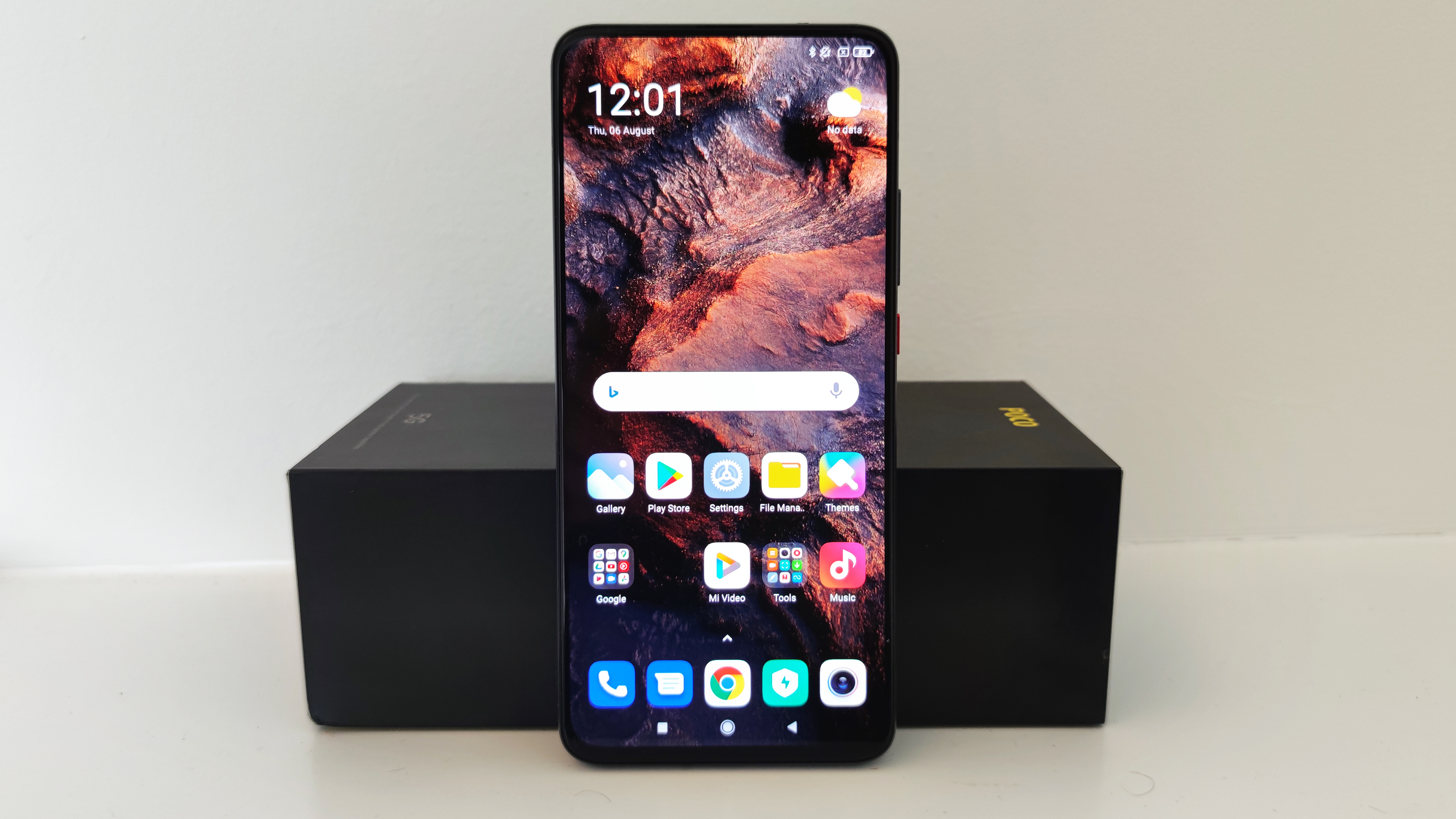
Software
The Xiaomi Poco F2 Pro runs Android 10 with Xiaomi’s MIUI laid over the top. In nearly every Xiaomi phone review we write we criticize MIUI for one major issue, but the company hasn’t fixed it for this Poco device, so we’re going to have to bring it back up: MIUI has too much bloatware.
When you first turn on your Xiaomi phone, you’ll find it packed with plenty of annoying apps you didn’t download - some of them are simple games, others are unnecessary duplicates of apps that come as part of the Google Mobile Services, then there are just random apps for certain services like WPS Office, AliExpress, LinkedIn and eBay.
Chances are the majority of these apps are ones you won’t use, and either you leave them to clutter up your phone, or you’ll have to go on a long deleting spree when you first use your device.
Generally, navigation in MIUI is easy, as you can enable an app drawer which is divided into categories like ‘entertainment’ and ‘communication’, so it’s quick and easy to find things. We couldn’t find any gesture navigation options on the phone though, which is a shame as most handsets offer this method of navigation for those who want it.
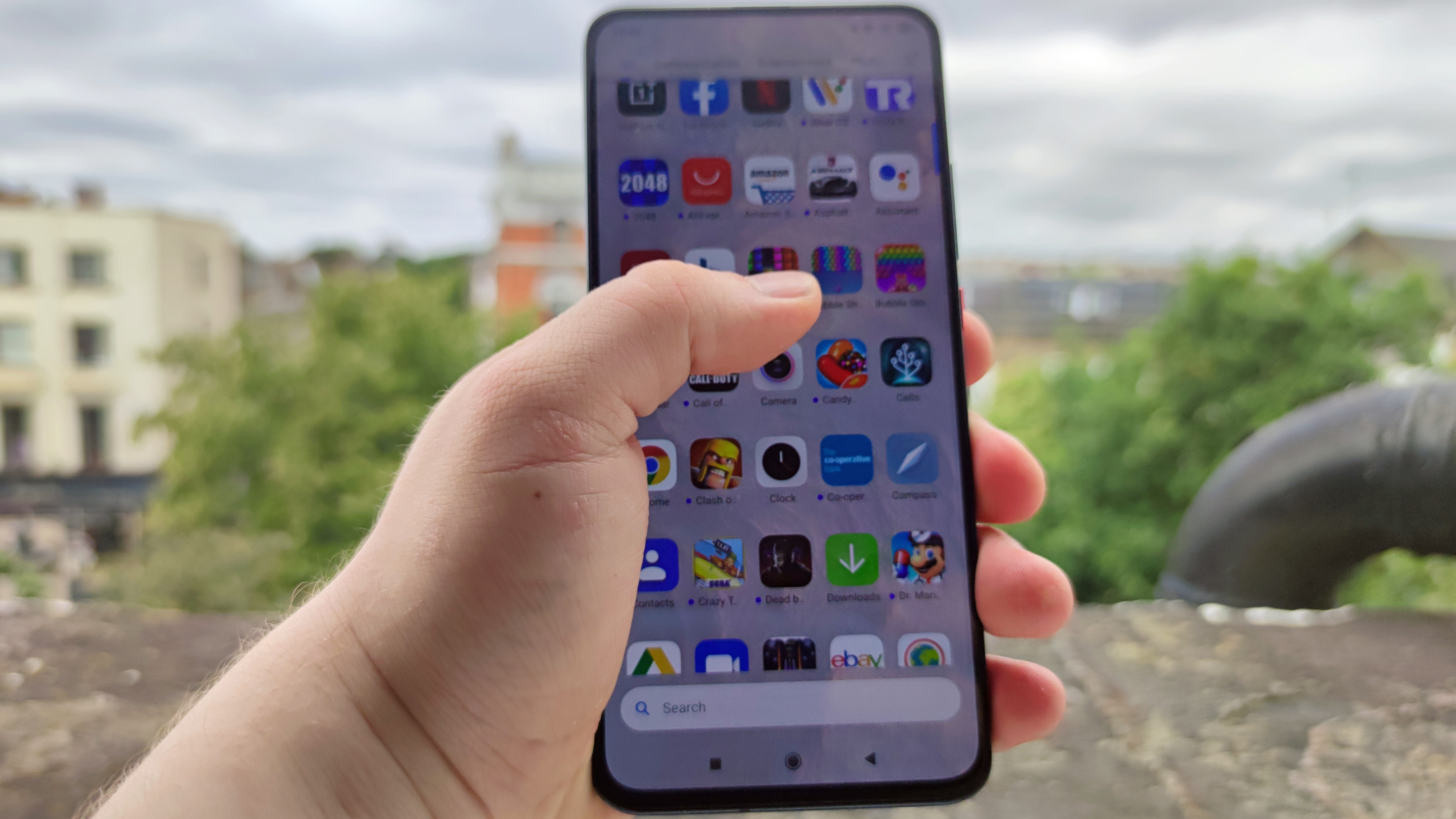
Scrolling through the phone feels snappy for the most part as we’ve said, but there was a little bit of lag when we used the live wallpapers included in MIUI. That’s a shame as we feel these look pretty cool, especially the Mars-themed one that’s the default for this version of MIUI, but the delay wasn’t bad enough for us to opt for a static wallpaper.
Battery life
The Xiaomi Poco F2 Pro has a 4,700mAh battery, which is pretty average for a mid-range phone - fittingly, the battery life is rather average too.
The phone will last for about a day between charges - it won’t get to a second day with much charge at all, but it should be able to survive a whole day even with heavy use. Well, most of the time.
Now and then we needed to give the phone a bit of a boost to keep it ticking for a full day if we’d been streaming music all day or playing lots of games, and while this was a rare occurrence, it’s still worth bearing in mind if you’re a heavy gamer or use your phone lots each day.
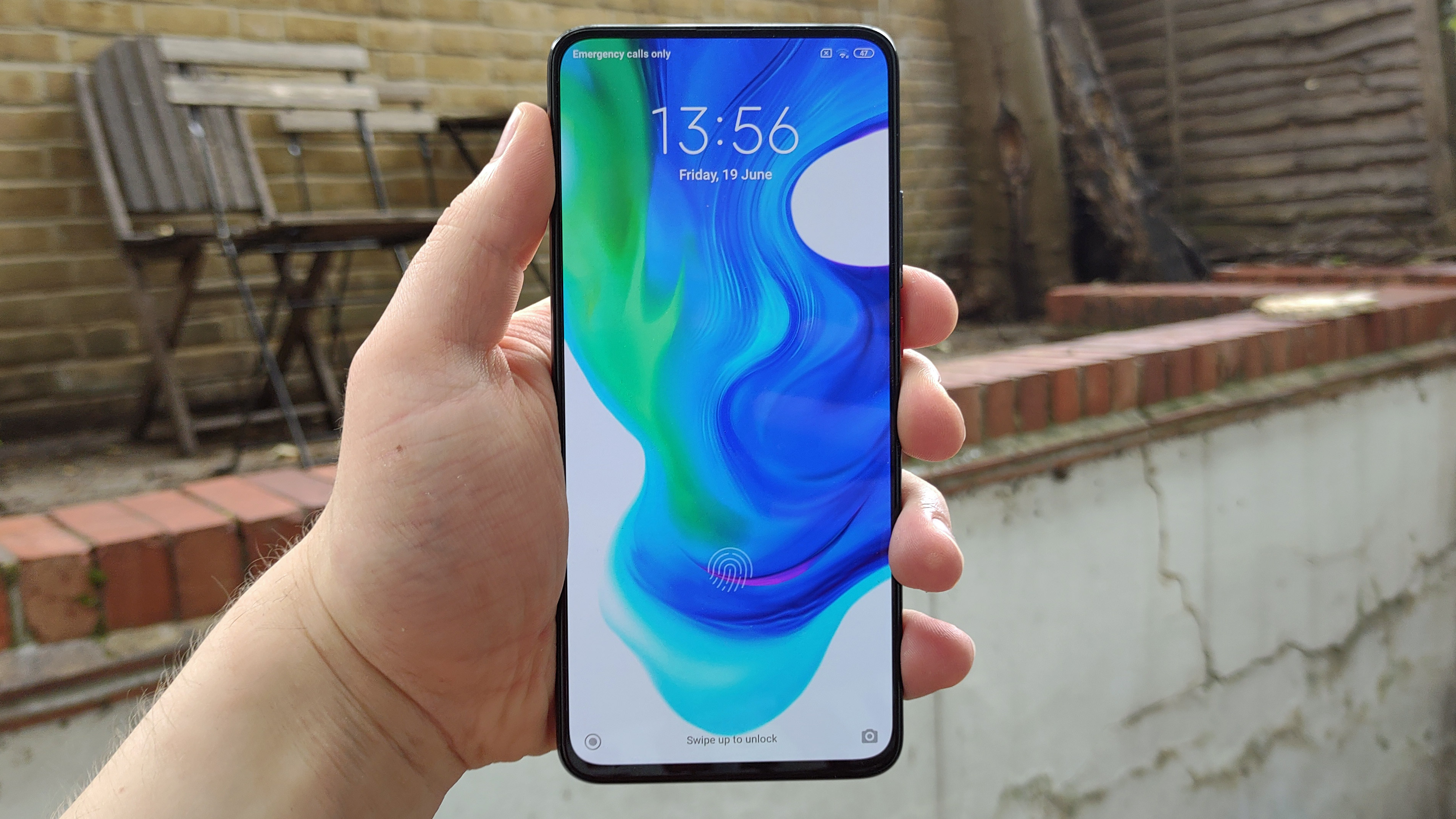
Xiaomi phones tend to have pretty snappy charging speeds, and that’s no different in the Poco F2 Pro, as its 30W fast charging will boost up your phone quite quickly.
Xiaomi estimates it will take about an hour for your phone to get fully charged at this speed, and we’d concur - we could easily plug the phone in for a few minutes to see us through an hour or so. This is perfect for people who aren’t overnight chargers - plugging in your phone while you get ready for work is all you should need to get through a day.
There’s no wireless charging in the Poco F2 Pro though - while such a feature is certainly not guaranteed in a mid-range handset, we always like to see it.
Should I buy the Xiaomi Poco F2 Pro?

Buy it if...
You want an 'unbroken' screen
Thanks to its pop-up camera, the front of the Poco F2 Pro is almost entirely screen - no pesky cut-outs or notches get in the way of your movie, TV show or game.
You don't need a premium phone
The Poco F2 Pro has a fair price tag that should appeal to a wide range of users. Sure, buying a premium phone will get you a few more features, but if you don’t need them then the Poco F2 Pro won’t disappoint you.
You like the idea of a pop-up camera
The pop-up camera phase has largely passed, and we don’t see too many new devices with this cool design quirk. If you think you want a camera that pops up at your command, you won’t have many options beyond the Poco F2 Pro.
Don't buy it if...
You want top photography power
Pictures taken on the Poco F2 Pro are good but not great, and if you want serious photographic power to take zoomed shots or pictures that are sharp and vibrant, there are devices from other companies (and even Xiaomi itself) which will suit you more.
You don't need top-end specs
Some people may come to the Poco F2 Pro expecting another affordable phone like the Pocophone F1, but this isn’t like that phone at all. If you want a phone that’s seriously cheap and has some impressive features, perhaps look instead to the Moto G, Xiaomi Redmi or Oppo A lines.
You want a small phone
Your options are very limited if you want a small one-handed phone nowadays, but even people with larger hands might struggle with the Poco F2 Pro. So if your digits are on the small side, it might be worth looking elsewhere for your next smartphone.
- First reviewed August 2020

Tom Bedford joined TechRadar in early 2019 as a staff writer, and left the team as deputy phones editor in late 2022 to work for entertainment site (and TR sister-site) What To Watch. He continues to contribute on a freelance basis for several sections including phones, audio and fitness.
